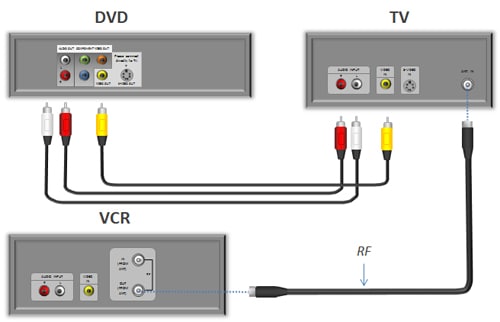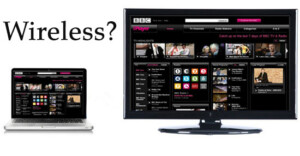. Can I transfer music by drag-and-drop using the Finder on an Apple Macintosh computer?. Can I transfer music to my Walkman player by drag-and-drop using the Apple iTunes application? You can transfer music by drag-and-drop directly from Finder of Mac OS or the Music library screen of iTunes to the MUSIC folder on your Walkman. NOTE:. If you import music from the Music library screen of iTunes, the individual music transfer as separate files rather than into a single folder with the album name. Music with copyright protection, such as music purchased from iTunes Store, cannot be transferred.

Video Players For Mac
Connect your Walkman to your computer using the supplied USB cable. Once the connection is completed, WALKMAN icon (or microSD card name) will be displayed on the desktop of Mac OS.
How to transfer music from Mac OS to a Walkman player. Connect your Walkman to your computer using the supplied USB cable. 'Content Transfer for Mac' is a software to transfer your music, video, photos, podcasts and playlists in an easy way. Terms and Conditions PlayStation.com © 2018 Sony Interactive Entertainment Inc.
Download the latest version of the Connect player and access the Connect music store, one of the world's largest music download stores. Best Video Software for the Mac How To Run MacOS High.
NOTE: With a Walkman that supports microSD card, you can specify the transferring destination for your content. For more details, refer to the manual supplied with the product. Select WALKMAN in the sidebar of the Finder, then open the MUSIC folder. Transfer music with one of the following methods.
Transferring from Finder. Double-click the folder where music you want to transfer are stored in Mac OS to open it. Place the folder where the music you want to transfer are stored next to the MUSIC folder of your Walkman. Transferring from the library screen of iTunes. Start up iTunes, then open the iTunes library window. Place the folder where the music you want to transfer are stored next to the MUSIC folder of your Walkman.
Sony Connect Software Download
Drag-and-drop the music you want to transfer to the MUSIC folder of your Walkman. Once the music you want to transfer are displayed in the MUSIC folder, the transfer is complete. NOTE: Music and folders will be arranged in alphanumeric order.
Connect Mac To Mac

Hierarchy may differ depending on your computer environment. Drag-and-drop the WALKMAN icon to the Trash icon to eject your Walkman. Once the WALKMAN icon disappears from the Desktop, disconnect the Walkman from Mac OS.
How to Connect your Computer (PC/Mac) to your VCR How to connect your computer to your VCR or analog Camcorder to record audio/video from your computer to the VCR or to the Computer from the VCR or other audio/video source. Computer OUT to VCR IN: (record your computers content with your VCR, or other audio/visual recording medium) VIDEO: In this scenario, there are two different signals to be considered. There is the video signal and the audio signal. The video signal is a bit tricky if you don't have a video card with a video output that isn't digital, which is getting rather rare these days. Many new computers have HDMI or Displayport outputs, which are great but require expensive professional cards to capture the video, and copy protection issues can be a major problem. Google sheets format as table.
Digital: Your best bet for something affordable is a BlackMagic Design ' Intensity' card or external USB 3.0 converter. The line accepts HDMI, so if you have Displayport or mini DisplayPort, then you'll need a converter. Analog: To get video output you will need to use a VGA to video converter box. These are available with a number of different features, such as PAL compatibility, S-Video output or Component Video output. Converting to one of these outputs will convert the video to a Standard Definition signal that the VCR can accept and record. Example converters: You can possibly get better video quality with 'S-Video' or 'Component Video' rather than the usual included 'composite' video cable, since S-Video (often called Y/C video or S-VHS) separates the video into separate color and brightness signals for increased video fidelity, and Component Video seperates the signal into three parts. The caveat here is that recorders with S-Video or Component Video inputs are exceedingly rare.
Examples: AUDIO: The audio signal will be taken from your audio 'line out' connector on the back of your computer, or if there is none, then the 'speaker' output will usually work fine. Most of these audio outputs use a connector called a '3.5mm stereo mini phone plug' (or 1/8' mini phone plug) which is 'standard' although some more proffesionally oriented sound cards have 'RCA' jacks. If you don't know what yours has, it is almost definately a mini phone plug.
So, to connect the computers output to the VCR input, you use a 3.5mm mini plug to Rca cable or an adapter together with a RCA jack stereo cable which goes to the audio input of your VCR. Here are examples of the parts you need: 1) 3.5mm to RCA Cable Or you'll need an adapter cable and a stereo cable: 1) 3.5mm plug to RCA jack adapter 2) RCA jack stereo cable VCR OUT to Computer IN: (record from VCR to your computer) VIDEO: The idea here is to to connect your VCR or older Camcorder with analog output to your computer in order to 'record' your video to your computers hard drive for later watching, or editing or to make Video CD's, DVD's or perhaps to put on the web. What you need will depend on the 'size' and quality of the finalized video you are going to need, and what the videos will be used for. If you just want to 'capture' a small (example:352x288 pixels) sized video (a small screen on your desktop like you would see on Internet video clips) then a Video to USB adapter will be fine. This will not be good for editing and recording back to your VCR or Camcorder, for doing this you need to capture 'full screen video'. If you want to capture 'full screen' (usually considered 640x480 pixels which is basically the same as American 'NTSC' standard Television) then you will need something that can handle quite a bit more 'bandwidth' (larger quantity of data per second) than USB can handle.
USB 2.0 Capture devices or Firewire Capture devices can generally do a pretty fair job, with firewire generally being better. USB 3.0 or Firewire 800 can handle HD signals, so a VCR's output will be a piece of cake for those transfer connections. PCI slot Capture cards are another great option if you can still find one for Composite video. Examples: AUDIO: You can connect the VCR's audio outputs directly to the Capture devices inputs. If the video capture device has no audio inputs, then use the 'mic/line' input of the computer. You use a 3.5mm mini stereo phone plug to RCA jack adapter with a RCA jack stereo cable which goes to the audio output of your VCR or other audio source.
Here are examples of the parts you would need if you are using your internal audio card: 3.5mm stereo mini phone plug to RCA Cables Or you'll need an adapter cable and a stereo cable. 3.5mm stereo mini phone plug to RCA jack adapters RCA jack stereo cable If you are using a Pro or Semi-Pro Analog Audio/Video Capture card that captures both audio and video and uses different connectors, then it would depend on your specific model which audio or video adapter, if any, you would need. Basically, if the signals are the same, you just need to match up the connectors.

A VCR will always use stereo (two) RCA jacks for audio and a single RCA (yellow color coded) jack for composite video. Some Pro or Semi-Pro Models use S-Video jacks or BNC jacks for composite video.